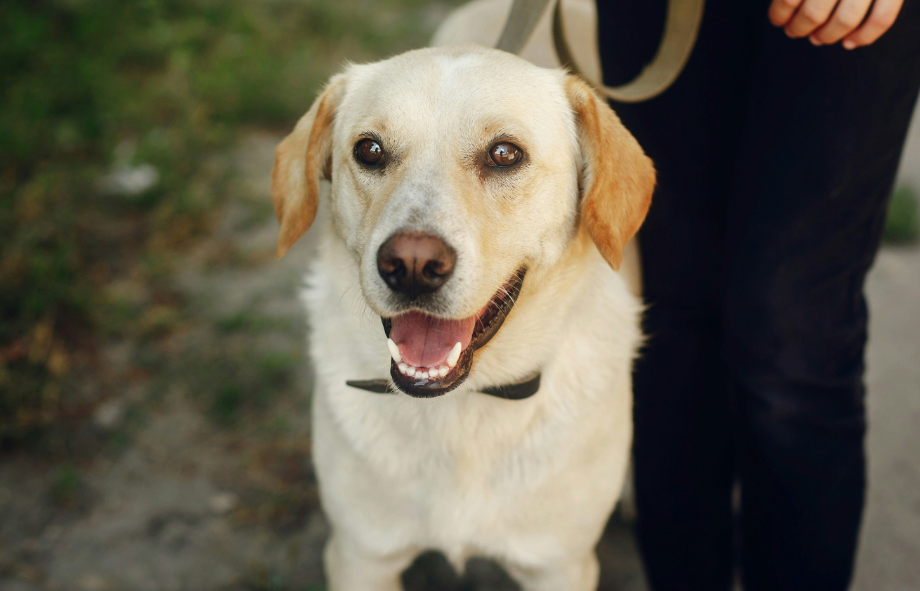Labradors are one of the UK’s most loved dog breeds – loyal, energetic and endlessly engaging. As a pet relocation company, PetAir UK is passionate about sharing breed wisdom that supports your pup’s welfare whether at home or in transit. Below are 10 fascinating facts about Labradors, backed by current research, along with useful tips for owners.
1. Webbed toes = natural swimmers
Labradors have partial webbing between their toes, which helps them paddle efficiently in water. In snowy or muddy conditions, that same webbing can reduce debris build-up. But swimming lovers will want to monitor ear health – frequent water exposure can lead to ear infections. Use gentle ear-drying after swims and check regularly for redness or discharge.

2. Double-coat insulation
Labs possess a short, dense topcoat over a softer undercoat, offering insulation from cold and damp weather. This structure also helps repel light rain. However, during seasonal shedding (spring and autumn) they moult heavily. Regular brushing (2–3 times per week) helps reduce loose hairs inside your home and keeps skin healthy.
3. A top choice for service and guide dogs
Their intelligence, sociability and eagerness to learn make Labradors among the most common breeds used for guide dogs, assistance roles and therapy. Their temperament is calm yet alert – traits that also make them wonderful companions.
4. A consistently popular breed
Labradors remain consistently popular in the UK and around the world. Their versatile nature – from family pets to working roles – drives demand. If your Labrador is relocating, that popularity helps with transport compatibility and acceptance at multiple destinations.

5. People-focused and social
Labs thrive on human interaction. Left alone for long periods, they can develop separation anxiety or destructive behaviours. Aim for structured activity, mental enrichment (puzzle toys, scent games) and, if your relocation schedule allows, interim pet care rather than leaving them isolated.
6. Multi-role working breed
Beyond guide work, Labradors serve in roles like search and rescue, detection, tracking, therapy, and gun dog work. Their strong scenting ability and versatility make them a go-to in many sectors. If your Lab is a working/assistance dog being relocated, PetAir UK handles the specialised logistics for registered working dogs to and from 300+ destinations.
7. Heroic Labrador: Endal
One of the most celebrated Labradors in the UK was Endal. Awarded the PDSA Gold Medal for bravery, Endal helped his disabled owner when he collapsed – covering him with a blanket, retrieving a phone, and getting help once the owner regained awareness. His legacy reminds us of the intelligence and loyalty inherent in the breed.

8. Colour diversity in one litter
Labrador litters can yield black, yellow (ranging pale cream to fox red) or chocolate pups – all from the same parents if their genes allow. This variety stems from complex coat colour genetics involving the B and E loci. However, note that colour can correlate with health trends (see fact 10).
9. Lifespan: average and variation
A recent UK study shows they have a median lifespan of around 12.0 years. Notably, chocolate-coloured Labradors had a shorter median lifespan (10.7 years) than non-chocolate ones (12.1 years) in that study. That said, exceptional individuals sometimes live beyond 14 or even 15 years.
10. Common health predispositions
Being a purebred breed, Labradors carry a few inherited health risks. In the UK, the most frequently recorded disorders include:
- Otitis externa (ear infection)
- Overweight/obesity
- Degenerative joint disease / arthritis (especially hip, elbow)
- Skin conditions and allergies, more common in chocolate Labs
- Joint dysplasias (hip, elbow) and cruciate ligament rupture risk
Tips for owners:
- When choosing a puppy, ask for BVA hip and elbow scoring and eye/skin health clearances (Canine Health Schemes)
- Maintain a lean body condition. Even carrying 10% extra weight stresses joints.
- Moderate growth in pups – avoid over-exercising while growth plates are open (under 12 months).
- Provide joint supplements or vet-recommended diets in later years.
- Clean ears gently after swimming and monitor for symptoms of ear disease.
- Early detection: regular vet checkups, especially for spotting signs of a limp, ear issues, and skin itching.

Tips for maintaining Labradors’ health during relocation
Relocating a Labrador (or any pet) is more than just transport – wellness care is key. Here are a few relocation-specific tips:
- Exercise before travel: A well-walked pet is more settled during transit.
- Weight control: Avoid overfeeding before and during travel.
- Ear care: If your Lab swims or is bathed before travel, dry ears thoroughly to reduce infection risk.
- Vet checks: Confirm up-to-date vaccinations, parasite prevention, and a recent health check (ideally within 7 days).
- Know destination regulations: Some countries require blood tests, microchip standards, or quarantine.
If you’re relocating a Labrador (or any breed), PetAir UK combines veterinary insight with international logistics to ensure a stress-free, safe journey. Request a free pet travel quote online or give us a call to speak to our expert team today.
